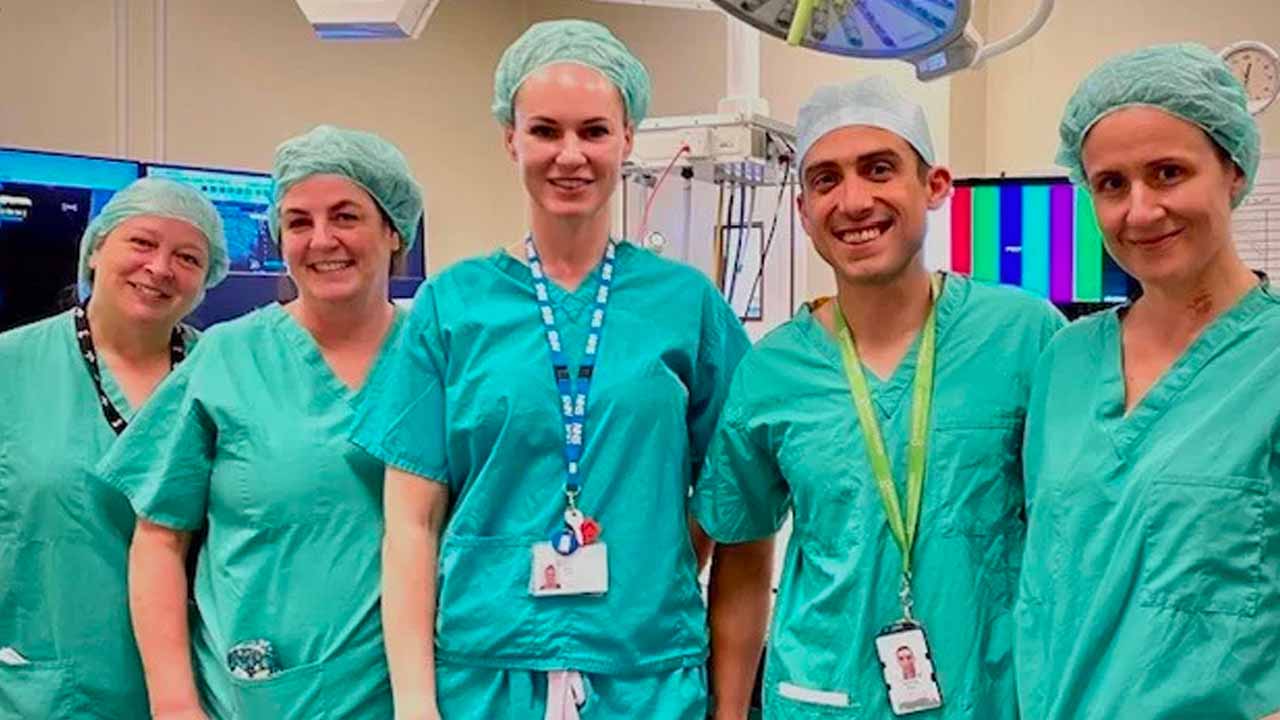Lymph Node Surgery in Breast Cancer
Breast cancer can spread from the breast tissue to the lymph nodes in the armpit (axilla). In the majority of patients with invasive breast cancer, aside from having an operation on their breast to remove the cancer, a lymph node removal procedure is also performed to reduce the chance of cancer reoccurrence or spreading to different parts of the body.
Why Is Lymph Node Surgery Required?
Lymph node removal surgery is important for many breast cancer patients as it can help stop the cancer from spreading. Cancer cells will continue to multiply and latch onto other parts of the body. Often, the first place breast cancer spreads is to the lymph nodes in the axilla, as this is located close to the breast.
For many patients, the main reason for taking some lymph nodes from the axilla is to establish whether or not the breast cancer cells are seen in the nodes under microscopic assessment. This information helps to guide decision-making about non-surgical cancer treatments such as chemotherapy, radiotherapy and endocrine therapy.
An axillary lymphadenectomy is usually performed for cases of locally advanced breast cancer or very malignant tumours to identify if the cancer has spread further. For very early stage breast cancer, where the cancer cells have not spread to the lymph nodes, doctors might choose not to remove lymph nodes.
frequently asked questions
What are lymph nodes?
Lymph nodes are small lumps of tissue found in various parts of your body, including your neck, groin and armpits. Part of the lymphatic system, lymph nodes help protect you from infection. They contain white blood cells and are an important part of your body’s immune system. Lymph nodes help fight infection by destroying germs carried in by the lymph fluid. If your lymph nodes swell this can be a sign of a serious illness, such as cancer.
How many lymph nodes are removed during surgery?
The total number of lymph nodes in the axilla varies from person to person, ranging from around 10-40 nodes. The number of nodes that are removed is based on a number of factors. The main one is determining which axilla procedure is required. To a large degree, this decision is dictated by what we know about the patient’s lymph nodes prior to surgery, from the scans and sometimes lymph node biopsies that have been performed. Swollen lymph nodes will need to be removed, but other lymph nodes might be taken, depending on the type of procedure being carried out.
Can you live without lymph nodes?
Lymph nodes are located throughout your body, so removing some lymph nodes located in your armpit won’t mean you have no lymph nodes at all. Even if you have all the lymph nodes removed from your one armpit, there are still many others across your body, including in your groin, neck and under your chin. As such, while you might find you have to deal with additional infections, you have more lymph nodes located in other parts of your body than the ones removed from your axilla.
What is a sentinel lymph node biopsy (SLNB)?
A Sentinel Lymph Node Biopsy is the most commonly performed axilla procedure in breast cancer patients in the UK. In the majority of patients with a new diagnosis of breast cancer, the ultrasound scan of their axilla is normal, suggesting that there is no clear evidence of cancer in the lymph nodes. However, the ultrasound is not always a reliable test for confirming cancer spread to lymph nodes. In a sentinel lymph node biopsy procedure, also known as regional or selective lymphadenectomy, the surgeon uses a radioactive or coloured dye to highlight the nodes that the abnormal cells would theoretically spread to first. These lymph nodes (usually 2-4 nodes) are surgically removed via a small incision under the arm. They are then sent off to the lab for analysis to confirm whether there is any evidence of cancer spread to the lymph nodes.
What is a axillary lymph node clearance (ALNC)?
Axillary Lymph Node Clearance, also known as axillary lymph node dissection or a radical lymphadenectomy, is a procedure to remove most or all the lymph nodes in the armpit. This is performed in patients where pre-operative scans and biopsies have proven cancer spread to multiple lymph nodes in the armpit. The main issue with this procedure is that it carries a 30-40% lifetime risk of developing some degree of lymphoedema in the arm. Lymphoedema is a chronic problem where the arm can become swollen and painful, and it can be difficult to treat. Patients who have undergone an axillary clearance are therefore advised to try to protect the arm on this side from injury (including injections and blood taking) in the future, as this can increase the risk of lymphoedema onset.
What is targeted axilla dissection (TAD)?
A Targeted Axilla Dissection is still a relatively new procedure and has not yet been carried out at all medical institutions. Historically, an axillary lymph node clearance was performed in all cases where the patient was confirmed to have spread to at least one node, demonstrated on scans pre-operatively. With a targeted axillary dissection, patients with only 1-2 nodes seen to contain cancer on pre-operative tests can preserve the majority of the lymph nodes, reducing their risk of lymphoedema when compared to an axillary clearance. This is achieved by using a tracer to locate and remove the nodes that are known to be cancerous and then also performing a sentinel node biopsy to confirm that there are no further nodes containing cancer that had not been detected on the scans pre-operatively.
How do I choose the right type of lymph node removal for my situation?
Your breast cancer surgeon will help you understand the different types of lymph node removal and choose the right surgical procedure for you. They will take into account a variety of factors and find a way to remove cancerous cells and test for further spread of the cancer.
Book Your Lymph Node Surgery Consultation
With so many types of lymph node surgery available and medical advice being updated as we learn new things about cancer cells and how they operate, it can be difficult to select the right procedure for you.
Working with a renowned breast surgeon like Andrew Pieri, you can make the most of his extensive experience and ongoing professional development to ensure you find the right option to treat your cancer.
If you would like to discuss your situation with an experienced oncoplastic surgeon and establish what options are available to you, then arrange a consultation with Mr Pieri.
Mr Pieri will be happy to discuss your lymph node removal and other breast cancer treatment needs so you can find the option that works best for you. Fill out the form below to book a consultation today.









